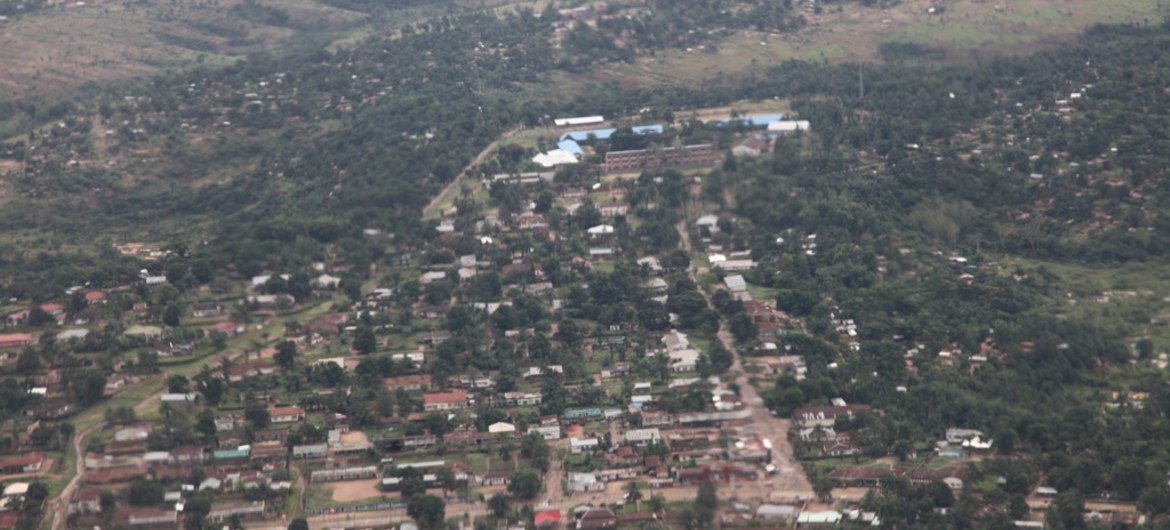
Key Takeaways:
-
Kananga blends rich history and local culture with access to nature, making it an ideal destination year-round.
-
From vibrant markets to traditional dance festivals, there’s always something to experience in Kananga regardless of the season.
-
It’s a lesser-known destination that rewards curious travelers with authentic and affordable adventures.
Located in the heart of the Democratic Republic of the Congo, Kananga is a city known for its cultural vibrancy, local artistry, and historical significance. Once called Luluabourg, it served as the capital of Kasai-Occidental province and was pivotal during Congo’s colonial and post-independence history. Kananga sits near the Lulua River and is surrounded by scenic countryside, traditional villages, and opportunities for cultural immersion. Travelers are drawn to Kananga for its warm local hospitality, colorful marketplaces, and unique spiritual and artistic traditions.
Table of Contents
-
Visit the Grand Marché de Kananga
-
Attend the Festival of Traditional Dances
-
Explore the Lulua Riverfront
-
Tour the Mikalayi Mission Historical Site
-
Experience a Local Village Cultural Exchange
-
Discover the St. Clement Cathedral
-
Enjoy Traditional Music at a Local Bar
-
Hike the Hills Near Kananga Airport
-
Visit the Kananga Artisans’ Collective
-
Try Local Cuisine at a Family-Owned Restaurant
1. Visit the Grand Marché de Kananga
Kananga’s central market, known as the Grand Marché, is the beating heart of the city. Open daily, this bustling space features hundreds of vendors offering everything from colorful textiles and spices to hand-carved goods and fresh produce. Walking through the market is an immersive sensory experience filled with the sounds of bargaining, the smell of Congolese spices, and the vibrant sight of local culture in action. It’s the perfect place to support local commerce while picking up a few one-of-a-kind souvenirs.
Beyond shopping, the market offers a glimpse into daily life in Kananga. Interactions with vendors often turn into cultural exchanges, especially when you’re curious and open. Many locals speak French and local languages like Tshiluba, and even basic greetings go a long way. Be sure to bring cash, negotiate prices respectfully, and take time to learn the stories behind the products—many items have deep cultural or spiritual significance.
2. Attend the Festival of Traditional Dances
Held several times a year, particularly during regional holidays and harvest seasons, Kananga’s Festival of Traditional Dances is a must-see. This spectacular event brings together dancers from nearby villages who perform ancestral routines accompanied by drums, bells, and chants. Each performance tells a story—sometimes of harvest, war, or spirituality—using centuries-old choreography and symbolic costumes. Locals and visitors gather in open courtyards to witness these celebrations of Congolese identity.
The festival is more than a show—it’s a deep expression of community, tradition, and continuity. Spectators are often welcomed into the circle to join in the dances or ask questions about their meanings. The atmosphere is joyous and communal, with local food and drink available nearby. Attending this event provides rare insight into Congolese cultural heritage and gives you a sense of connection to something deeply rooted and enduring.
3. Explore the Lulua Riverfront
The Lulua River offers a peaceful and scenic retreat from the energy of Kananga’s city center. Locals often gather here to fish, wash clothes, or picnic beneath the trees. A walk along the riverbanks gives travelers a deeper appreciation for the rhythms of life in Kananga. Whether you’re watching a colorful sunset or enjoying the cool breeze, it’s a tranquil spot to recharge and observe the slow-moving beauty of nature.
During certain seasons, you may see dugout canoes paddling gently through the water—these are hand-carved and still commonly used for transport. If you’re lucky, you might even be offered a ride or invited to join a riverside meal. The area surrounding the river is also home to diverse plant species and birdlife, making it an unexpectedly great place for amateur nature photography or quiet contemplation.
4. Tour the Mikalayi Mission Historical Site
About an hour’s drive from central Kananga, the Mikalayi Mission is a remarkable site rich with historical and spiritual meaning. Built by Catholic missionaries in the early 20th century, it became a major center for religious education and cultural exchange. The site includes original mission buildings, gardens, and a church still used for worship today. Visitors can explore the grounds and learn how faith traditions have evolved and blended with local customs over the decades.
Many who visit Mikalayi leave feeling inspired by the sense of continuity and resilience embedded in the site. The mission still plays an active role in the local community, offering services like schooling and agricultural support. Local guides often share both the colonial-era context and stories of how indigenous faith practices coexist with Christianity. This makes Mikalayi a fascinating and peaceful place for historical reflection.
5. Experience a Local Village Cultural Exchange
One of the most enriching activities in Kananga is arranging a guided visit to a nearby village. These tours, usually organized through local hosts or NGOs, offer a respectful and educational look into rural life. You’ll meet farmers, artisans, and elders who share their knowledge about traditional practices, from food preparation to herbal medicine. Guests are often welcomed with songs, stories, or demonstrations of local crafts.
Participating in this kind of cultural exchange creates meaningful memories that go far beyond tourism. You’ll gain perspective on how communities adapt to modern life while preserving important aspects of their heritage. Visitors are encouraged to listen, ask questions, and engage with humility. These experiences support sustainable tourism and help foster cross-cultural understanding—something especially vital in a world where such stories are rarely told on the global stage.
6. Discover the St. Clement Cathedral
A striking piece of architecture in the center of Kananga, the St. Clement Cathedral is one of the city’s most prominent landmarks. Built during the colonial era, it still serves as a major place of worship and community gathering. Its bold white facade, arched windows, and peaceful courtyard offer a beautiful setting for reflection. On Sundays and holidays, the cathedral comes alive with vibrant choirs, creating a moving and spiritual experience for anyone who attends.
Visiting the cathedral also provides a lens into the unique blend of European Catholic traditions and local Congolese spirituality. Many of the services incorporate traditional music and language, making it a culturally rich experience even for non-religious visitors. As a quiet retreat in the heart of the city, it’s a great stop whether you’re seeking inspiration, history, or simply a beautiful space to take in the rhythm of life in Kananga.
7. Enjoy Traditional Music at a Local Bar
Kananga’s nightlife might not be flashy, but it’s deeply soulful and incredibly welcoming. In local bars and cafés, especially on weekends, you can enjoy live Congolese music performed by talented local bands. The sounds of soukous, rumba, and gospel-inspired rhythms fill the air as people dance, clap, and sing along. It’s a scene full of life and joy, fueled more by connection than luxury.
These bars often double as community spaces where people gather after work or church. If you’re open to conversation, you’re likely to be invited into a circle of friends for a beer, a dance, or a lively discussion. The energy is contagious, and it’s one of the best ways to understand Kananga’s spirit—through its music, laughter, and spontaneous hospitality.
8. Hike the Hills Near Kananga Airport
Just outside the city near the airport, rolling hills offer scenic hiking opportunities with panoramic views of the surrounding countryside. These trails are mostly informal and used by locals, which means they’re quiet, natural, and rarely crowded. As you climb, you’ll pass through fields, small homesteads, and patches of forest alive with birds and butterflies. The reward is a view over Kananga that glows golden in the afternoon light.
This hike is ideal for those who want light outdoor adventure without needing formal equipment or a guide. It’s also a chance to see how urban and rural life blend at the city’s edges. Bring water, wear sturdy shoes, and always ask a local for advice on the safest paths—they’re often happy to join you or point the way.
9. Visit the Kananga Artisans’ Collective
Art and craftsmanship are central to Kananga’s identity, and the Artisans’ Collective is the best place to see this creativity firsthand. Located in a modest workshop near the city center, this collective is home to sculptors, weavers, painters, and metalworkers. Visitors can watch as artisans shape wood into intricate figures or dye fabrics with rich natural colors. Many of the pieces are available for purchase, making for meaningful souvenirs that directly support the local economy.
What sets this place apart is its focus on tradition and collaboration. The artists often work side by side, sharing tools, stories, and inspiration. Some pieces reflect spiritual themes or historical narratives unique to the Kasai region. Spending time here allows travelers to ask questions, learn techniques, and form real human connections behind the art.
10. Try Local Cuisine at a Family-Owned Restaurant
Kananga’s food scene is a delicious and often underrated part of its charm. At small, family-run eateries throughout the city, you’ll find dishes like fufu, cassava leaves, goat stew, and grilled tilapia, all bursting with flavor and served with warm hospitality. Meals are often made from scratch using seasonal, local ingredients, making them deeply rooted in the land and culture.
Dining at these spots isn’t just about eating—it’s about community. You’ll often be invited to sit with others, share dishes, and learn about the food’s meaning or preparation. Many recipes are passed down through generations and reflect the area’s agricultural heritage. If you’re lucky, the restaurant owner might even step out to thank you personally and tell you more about what you’re eating.
What to do if you have kids?
Kananga is a family-friendly destination if approached with a sense of adventure and flexibility. Children often enjoy the open-air markets, riverside walks, and cultural performances, especially those with music and dance. It’s a great opportunity for kids to experience a slower pace of life and learn about different cultures firsthand. Be sure to pack basic snacks, stay close to your accommodations in the evenings, and arrange for guided tours when heading to rural areas—local guides can help ensure safety and engagement for younger travelers.
Where can I find free events in Kananga DR Congo taking place this weekend?
For travelers looking to discover free events happening in Kananga this weekend, your best tool is https://planmyweekend.ai. It helps you instantly find local activities, cultural gatherings, and social events that fit your interests—without needing to rely on outdated travel blogs or word-of-mouth. Whether it’s a street performance, local dance gathering, or community market, Plan My Weekend makes discovering Kananga’s soul effortless and accessible.
Final thoughts on planning a trip here
Kananga isn’t a typical tourist destination—but that’s exactly what makes it worth visiting. Its richness lies in its people, its stories, and its unfiltered experiences. From riverside tranquility to foot-tapping music, from quiet churches to lively markets, every corner of Kananga offers something real and deeply human. Whether you’re a cultural explorer, nature lover, or curious wanderer, a trip here will expand your perspective and leave you with unforgettable memories.
Author: Dejon Brooks
Dejon Brooks is an entrepreneur who founded Trend Watchers with his life savings. Aged 24, Dejon has turned Trend Watchers into a successful business. After reaching over 150M+ people on his personal accounts, he now spends his time growing Planmyweekend.ai


